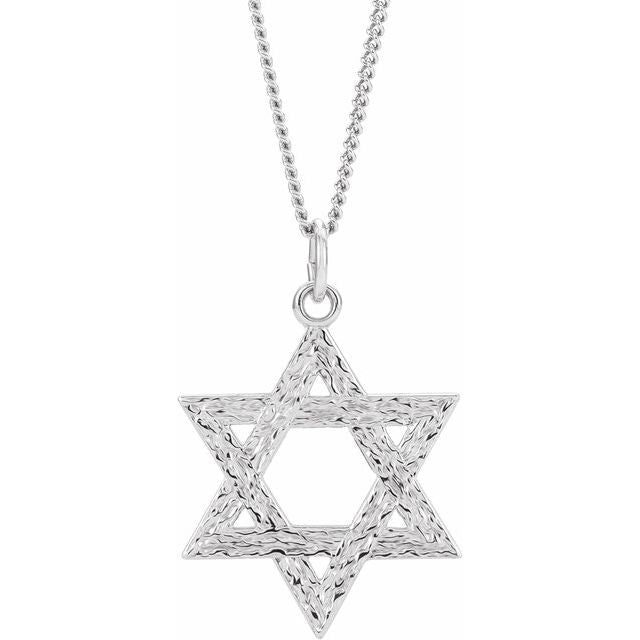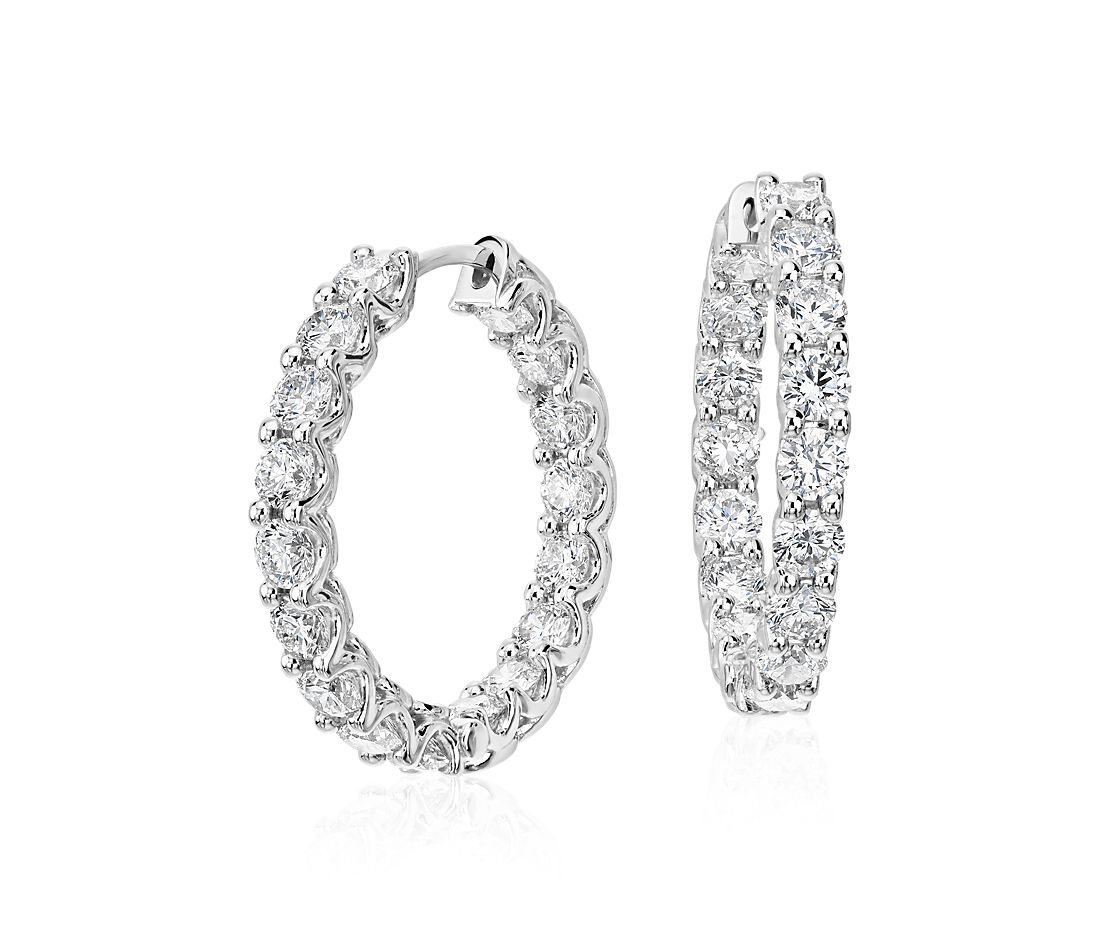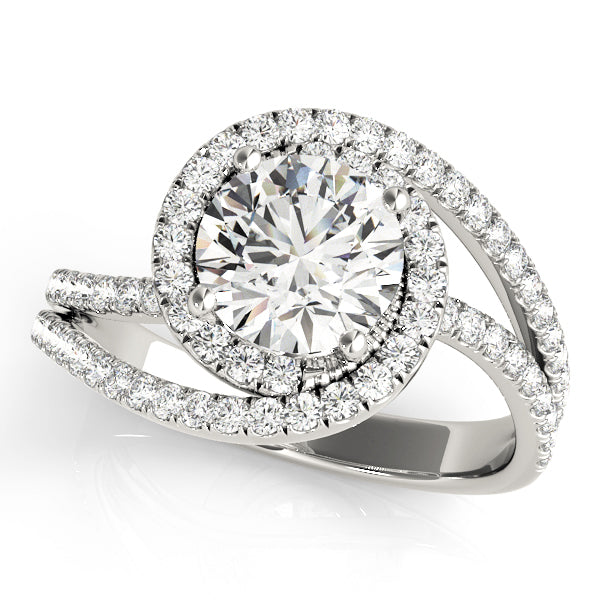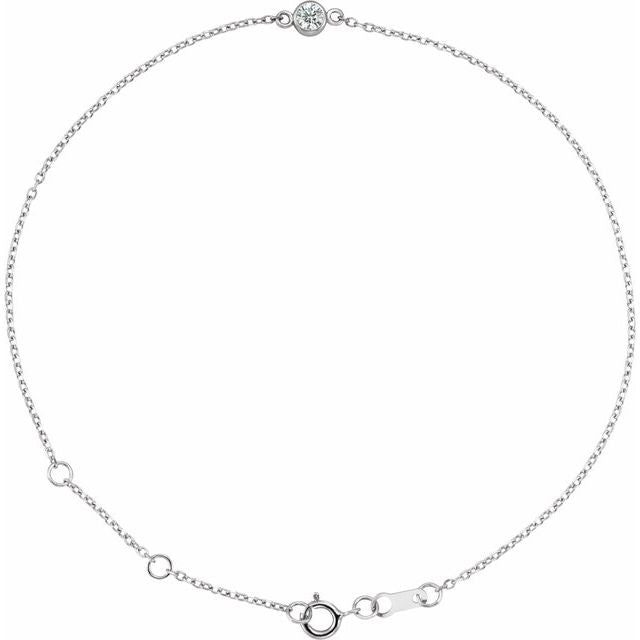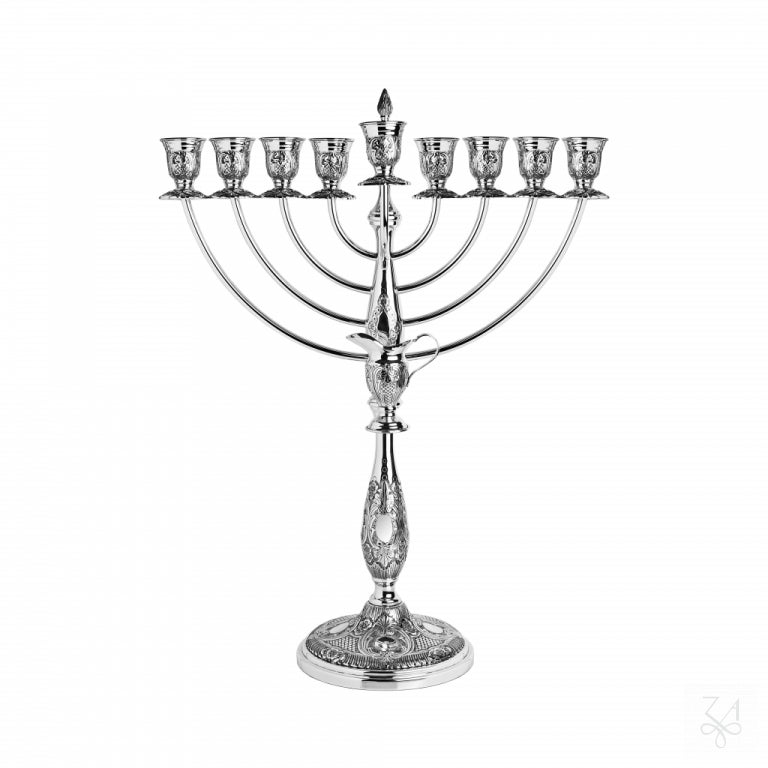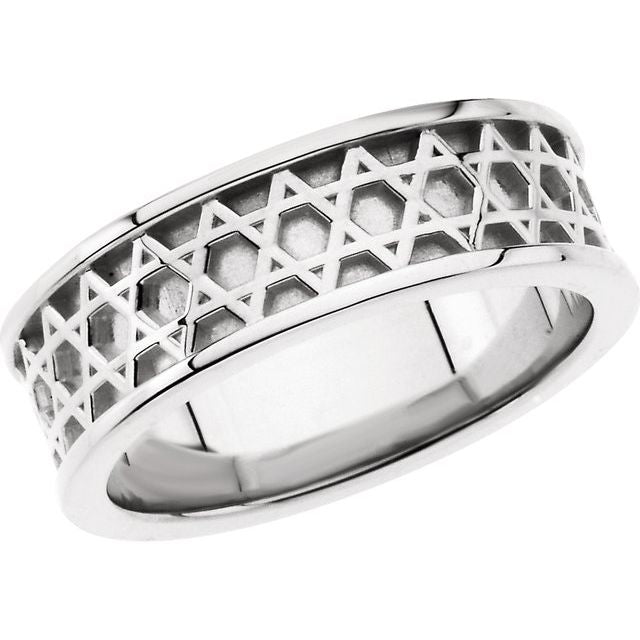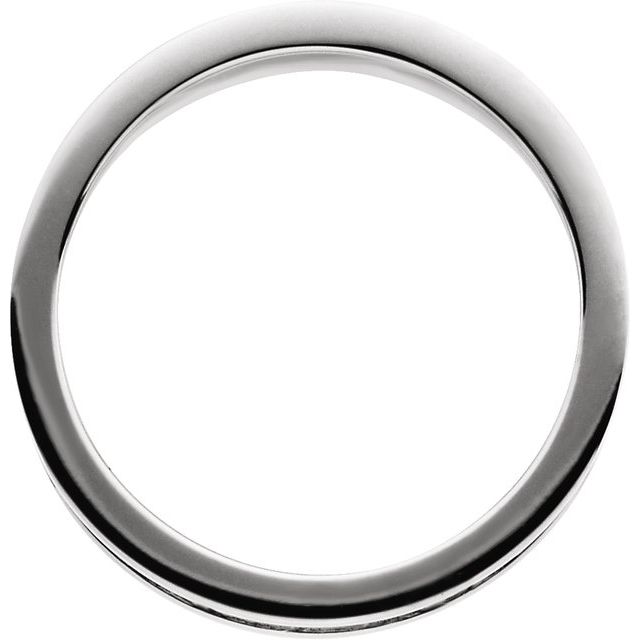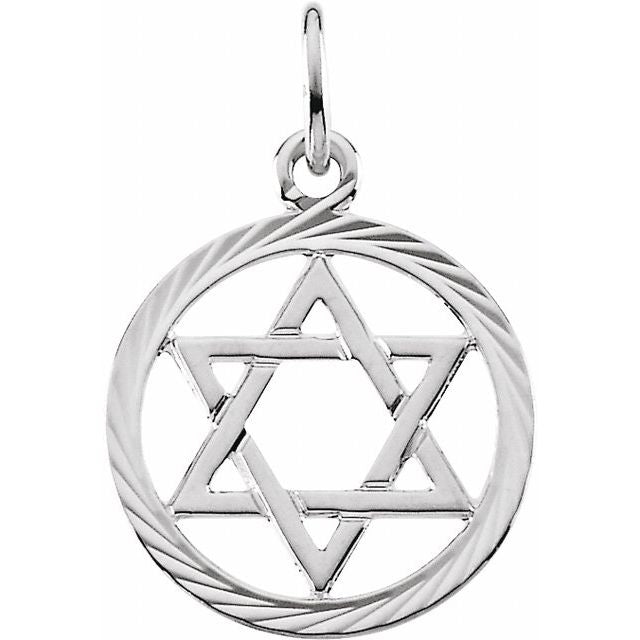What to Do If Your Engagement Ring Gets Damaged
An engagement ring symbolizes one of life's most precious commitments. It's not just a beautiful piece of jewelry; it's a daily reminder of love, promises, and the future you're building together. So when that cherished ring suffers damage—whether it's a loose stone, a bent prong, a scratch on the band, or worse—it can feel like more than just a material loss. It can feel personal.
I still remember the panic in my friend Sarah's voice when she called me after noticing her diamond was wobbling in its setting. "I've only been engaged for three months," she said, her voice cracking. "How could this happen already? What does this mean?"
The truth is, engagement ring damage happens more often than you might think. These rings are worn daily, exposed to countless activities, substances, and accidental bumps. Even the most careful person can find themselves facing a damaged ring at some point.
But here's the good news: almost all ring damage can be repaired, and with the right knowledge, you can prevent many issues before they occur. In this comprehensive guide, I'll walk you through exactly what to do when your engagement ring gets damaged, how to prevent future problems, and answer the questions that might be racing through your mind right now.

First Steps: What to Do Immediately After Noticing Damage
Stay Calm and Assess the Situation
The moment you notice something wrong with your engagement ring can trigger an emotional response. Take a deep breath. Most ring damage is completely repairable, and panicking might lead to hasty decisions or further damage.
Carefully examine the ring to determine what's wrong. Is a stone loose or missing? Is the band scratched, bent, or broken? Are the prongs damaged? Understanding the specific issue will help you communicate effectively with jewelers and insurance companies.
Stop Wearing the Ring
This might seem obvious, but it bears emphasizing: once you notice damage, remove your ring immediately. Continuing to wear a damaged ring can worsen the problem. A loose stone can fall out completely, a small crack can expand, and damaged prongs can fail to hold your center stone securely.
Place the ring in a soft pouch or box where it won't sustain further damage. If a stone has fallen out, carefully search the area where you noticed it missing. Check your clothing, furniture, car seats, and any place you've recently been. If you find the stone, store it safely with the ring to bring to your jeweler.
Document the Damage
Before doing anything else, take clear, well-lit photographs of the damage from multiple angles. These photos can be invaluable for insurance claims and can help jewelers understand the issue before you bring the ring in. They also provide documentation of the ring's condition before repairs begin.

Understanding Your Options: Repair, Replace, or Redesign
Professional Repair: Finding the Right Jeweler
Not all jewelers are created equal when it comes to engagement ring repairs. Ideally, return to the original jeweler who created or sold your ring. They'll be familiar with its specific design and materials, and many offer warranties that cover certain repairs.
If returning to the original jeweler isn't possible, seek recommendations for reputable jewelry repair specialists. Look for jewelers with the following qualifications:
-
Certified gemologists on staff
-
Experience with your specific type of ring (vintage, modern, specific metal types)
-
Positive reviews specifically mentioning repair work
-
Clear communication about the repair process
-
Willingness to provide detailed estimates
-
Insurance for items left in their care
When you visit the jeweler, ask detailed questions about the repair process, timeline, and cost. A good jeweler will explain exactly what needs to be done and why. They should also discuss preventative measures to avoid similar damage in the future.
Common Repairs and What to Expect
Different types of damage require different repair approaches. Here's what you might expect for common issues:
Loose or Missing Stones
When a stone becomes loose, the setting needs to be tightened or rebuilt. This typically involves carefully removing the stone, repairing or replacing the setting, and then securely resetting the stone. If the stone is missing and not recovered, it will need to be replaced with one of similar quality, color, and cut.
The cost varies dramatically depending on the size and type of stone. Replacing a small accent diamond might cost $100-300, while replacing a center diamond could cost thousands, depending on its specifications.
Damaged Prongs
Prongs are the small metal claws that hold your center stone in place. They're often the first part of a ring to show wear because they're relatively thin and exposed. A jeweler can rebuild worn prongs by adding new metal and reshaping them to securely hold your stone.
Expect to pay $50-150 to repair a single prong, with the price increasing if multiple prongs need attention. This repair is essential—don't postpone it, as damaged prongs are the leading cause of lost center stones.
Scratched or Dented Bands
Most metal bands can be polished to remove light scratches. Deeper scratches or dents might require more extensive work, such as adding new metal and reshaping the band. Platinum and gold rings are particularly amenable to this type of repair.
Simple polishing might cost $25-75, while more extensive reshaping could range from $100-500 depending on the metal and extent of damage.
Cracked or Broken Bands
A cracked or broken band requires soldering to repair. The jeweler will join the broken pieces and add new metal as needed to strengthen the repair. In some cases, if the break is severe, the jeweler might recommend creating a new band and transferring the stones.
Expect to pay $150-400 for a basic band repair, with higher costs for complex designs or if additional metal is needed.
Damaged Settings
Settings like halos, channels, or pavé designs contain multiple small stones and can be damaged in various ways. Repairs might involve rebuilding parts of the setting, replacing missing stones, or reinforcing weakened areas.
These repairs typically range from $200-700 depending on complexity and the number of stones involved.
When Repair Isn't Enough: Replacement and Redesign Options
Sometimes, damage is too extensive for a simple repair, or you might use this as an opportunity to rethink your ring design. Consider these options:
Complete Replacement
If your ring is severely damaged or if a particularly valuable stone is lost and not covered by insurance, you might need to consider a complete replacement. This gives you the opportunity to choose something similar to your original ring or go in a completely different direction.
Redesign Using Existing Materials
Many jewelers can use the materials from your damaged ring to create something new. This option preserves the sentimental value of the original materials while allowing for a fresh design that might be more durable or better suited to your lifestyle.
Setting Upgrade
If your stone is intact but the setting is damaged, consider upgrading to a more secure or more suitable setting. For example, if you have an active lifestyle and your high-profile setting keeps getting caught on things, you might opt for a lower-profile, more secure design.
Insurance Matters: Navigating Claims and Coverage
Understanding Your Insurance Coverage
Before any damage occurs, it's crucial to understand what your jewelry insurance covers. Most homeowner's or renter's insurance policies offer limited coverage for jewelry, often with high deductibles. Specialized jewelry insurance typically provides more comprehensive coverage specifically designed for engagement rings and other fine jewelry.
Review your policy to understand:
-
Coverage limits
-
Deductibles
-
Types of damage covered (accidental, theft, mysterious disappearance)
-
Replacement vs. repair policies
-
Required documentation for claims
-
Approved jewelers for repairs or appraisals
Filing an Insurance Claim
If your ring is insured and the damage is covered by your policy, follow these steps to file a claim:
-
Contact your insurance company immediately after discovering the damage.
-
Provide the documentation they request, which typically includes the original appraisal, receipt, photographs of the damage, and a repair estimate from a jeweler.
-
Follow their specific process, which might involve having the ring examined by an approved jeweler.
-
Understand whether they'll pay for repairs directly or reimburse you after repairs are complete.
Remember that making a claim might affect your future premiums, so for minor repairs, it might be more economical to pay out of pocket.
If You Don't Have Insurance
If your ring isn't insured, you'll need to cover repair costs yourself. This is when having a relationship with a trustworthy jeweler becomes especially valuable, as they might offer payment plans or suggestions for more affordable repair options.
Consider this a wake-up call to get appropriate insurance for your repaired ring or any replacement you purchase.
Prevention: Protecting Your Ring from Future Damage
Daily Care Habits
Developing good habits can significantly extend the life of your engagement ring:
-
Remove your ring during activities that could damage it, such as gardening, cleaning with harsh chemicals, moving heavy objects, or exercising.
-
Store your ring safely when not wearing it, using a fabric-lined jewelry box with separate compartments to prevent scratches from other jewelry.
-
Clean your ring regularly using appropriate methods for your specific metal and stones. A soft toothbrush, mild soap, and warm water work for most rings.
-
Put your ring on after applying lotion, perfume, sunscreen, and other products that can build up on the metal and stones.
-
Take your ring off before swimming in pools, hot tubs, or the ocean, as chlorine can damage certain metals and salt water can dull stones.
Professional Maintenance
Regular professional care is essential for preventing major damage:
-
Schedule professional cleanings every six months.
-
Have your ring checked by a jeweler every 12-18 months to inspect for loose stones, worn prongs, or thinning metal.
-
Consider having your ring replated if it's white gold, as the rhodium plating wears off over time.
-
Update your insurance appraisal every 2-3 years to reflect current replacement values.
Lifestyle Considerations
Sometimes, the best prevention is acknowledging that your lifestyle and your ring might not always be compatible:
-
Consider a silicone ring for activities like sports, travel to unfamiliar areas, or manual labor.
-
For healthcare workers, those who work with machinery, or anyone who uses their hands extensively for work, consider wearing your engagement ring on a necklace during work hours.
-
If you're consistently hard on your jewelry, discuss more durable setting options with your jeweler, such as bezel settings instead of prongs, or lower-profile designs.
The Emotional Side: Coping with Ring Damage
It's More Than Just Jewelry
The emotional impact of a damaged engagement ring shouldn't be underestimated. Many people experience genuine grief, anxiety, or even feelings of guilt when their ring is damaged. These feelings are completely normal.
Remember that the ring is a symbol of your commitment, not the commitment itself. Damage to the ring doesn't reflect on your relationship or predict future challenges. In fact, how you handle this situation together can strengthen your bond.
Communicating with Your Partner
If you've damaged your partner's ring or your own, open communication is essential:
-
Be honest about what happened rather than hiding the damage.
-
Focus on solutions rather than blame.
-
Acknowledge any feelings of loss or disappointment.
-
Use this as an opportunity to discuss practical matters like insurance and whether the current ring design suits your lifestyle.
Creating New Meaning
Some couples find that repairing or redesigning a damaged ring adds a new layer of meaning to the jewelry:
-
The repair becomes part of your story together—a reminder of resilience and problem-solving as a team.
-
A redesign can incorporate new elements that reflect your growth as a couple.
-
Some couples even add a small inscription or hidden detail during repairs to commemorate the experience.
Special Circumstances: Vintage, Heirloom, and Unique Rings
Vintage and Antique Rings
Older rings require specialized care and repair approaches:
-
Seek jewelers with specific experience in vintage jewelry repair.
-
Understand that finding exact matches for old-cut diamonds or period-specific details may be challenging.
-
Consider preventative reinforcement of delicate vintage settings before damage occurs.
-
Discuss with your jeweler whether modern materials or techniques might help preserve the ring while maintaining its vintage character.
Family Heirlooms
When the damaged ring has been passed down through generations, emotional and family considerations come into play:
-
Communicate with family members who might have a stake in the ring's preservation.
-
Consider consulting multiple specialists before proceeding with significant repairs or redesigns.
-
Document the ring thoroughly before and after repairs for family history.
-
Discuss whether keeping the ring in its original form is more important than making it wearable for daily use.
Custom and Unique Designs
Rings with unusual designs or materials present special challenges:
-
Return to the original designer if possible, as they'll understand the ring's construction best.
-
Keep detailed records of materials and design specifications to aid future repairs.
-
Consider whether certain unique elements might need to be simplified if they've proven structurally vulnerable.
When Damage Occurs Before the Proposal
A particularly stressful scenario is discovering damage to an engagement ring before you've even had the chance to propose. If you find yourself in this situation:
-
Contact the jeweler immediately, as many have return or repair policies for unworn rings.
-
Check the warranty, as manufacturing defects are often covered even if accidental damage isn't.
-
Consider whether the damage indicates a design flaw that might cause problems later, potentially warranting a different ring choice.
-
Don't let this delay your proposal plans unnecessarily—consider a temporary stand-in ring if repairs will take time.
Long-Term Considerations: When to Upgrade or Replace
Natural Wear Over Time
Even with perfect care, engagement rings eventually show wear. Gold and platinum bands become thinner, prongs wear down, and settings can weaken. At some point, you'll need to decide whether to:
-
Continually repair the original ring
-
Replace the ring with an identical or similar design
-
Use the opportunity to upgrade to a different style
Many couples choose to upgrade rings at significant anniversaries, after major life changes, or when financial circumstances improve.
Changing Preferences and Lifestyles
Your taste and lifestyle at 25 might be very different from your preferences at 35 or 45. What once seemed like the perfect ring might no longer suit your aesthetic or practical needs. It's perfectly acceptable to acknowledge this and make changes accordingly.
Some couples incorporate original stones into new designs, preserving the sentimental value while updating the style. Others keep the original ring as a keepsake and choose something entirely new for daily wear.
Conclusion: Your Ring's Journey Continues
A damaged engagement ring can feel like a small tragedy in the moment, but with the right approach, it becomes just another chapter in your ring's—and your relationship's—story. Every scratch, repair, and modification becomes part of its history and meaning.
Remember that the true value of your engagement ring lies not in its perfect condition but in what it represents: a commitment that, like the ring itself, may occasionally need care and attention but remains precious nonetheless.
By knowing how to respond to damage when it occurs, maintaining your ring properly, and having the right insurance coverage, you can ensure that this meaningful symbol remains on your finger for years—even decades—to come, collecting stories and memories along with the occasional scratch.
Whether your ring emerges from repair looking exactly as it did the day you received it or transforms into something new that better suits your current life, what matters most is the commitment it continues to represent. That's something no damage can diminish.
References
Gemological Institute of America (GIA). "Jewelry Care and Maintenance." https://www.gia.edu/gem-care
American Gem Society. "Jewelry Care & Cleaning." https://www.americangemsociety.org/page/jewelrycare
Jewelers of America. "Jewelry Insurance Guide." https://www.jewelers.org/ja/consumers/jewelry-information/jewelry-insurance
Jewelers Mutual Insurance Group. "Engagement Ring Care." https://www.jewelersmutual.com/the-jewelry-box/engagement-ring-care
International Gem Society. "Jewelry Repair: What You Need to Know." https://www.gemsociety.org/article/jewelry-repair/
The Knot. "Engagement Ring Insurance 101." https://www.theknot.com/content/engagement-ring-insurance-101
Brides Magazine. "How to Care for Your Engagement Ring." https://www.brides.com/story/how-to-care-for-engagement-ring



